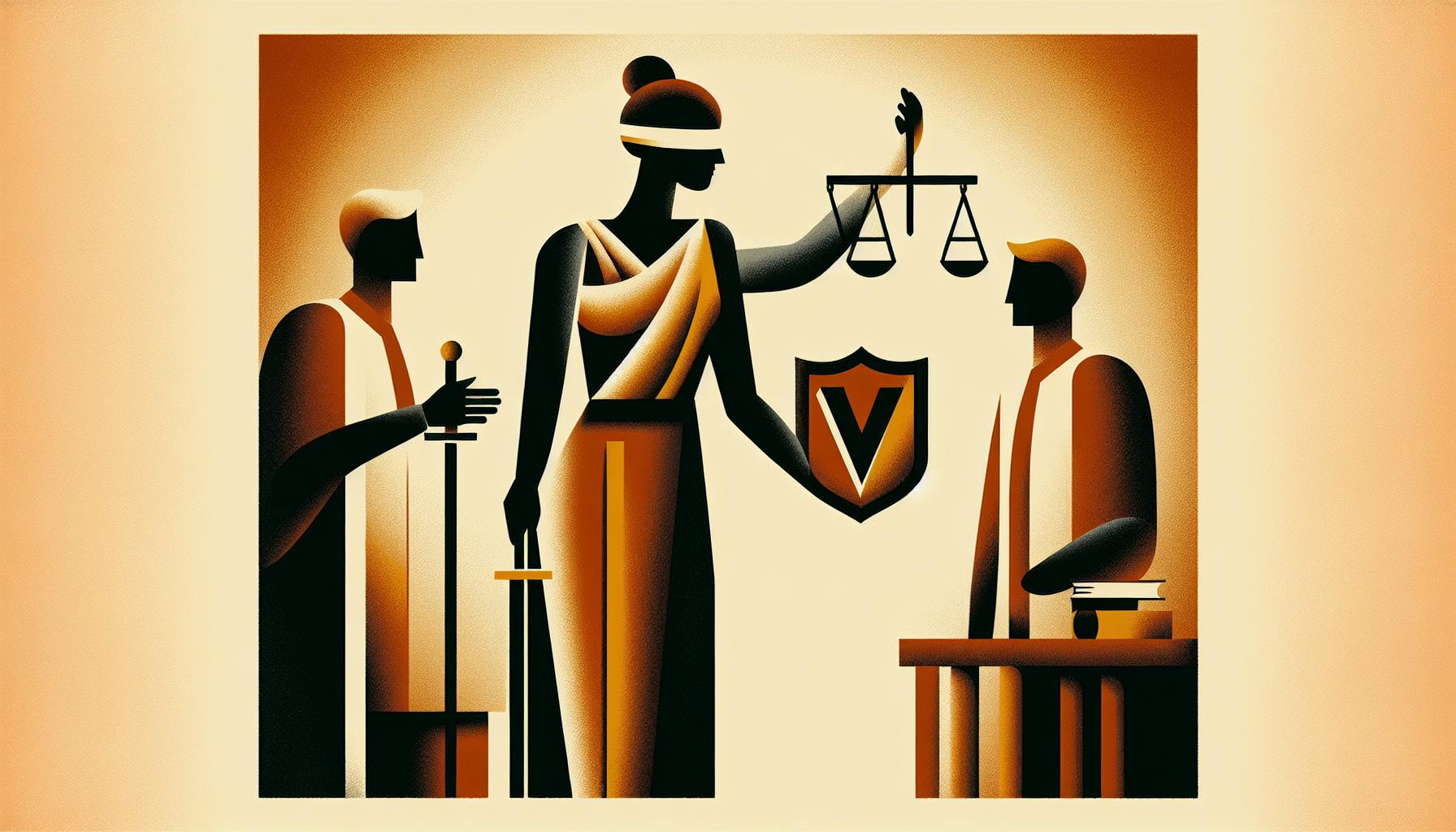Readers will likely agree that presidential succession is an important but complex topic.
This article will clearly explain key details around the 25th Amendment, including its historical context, procedures for invoking it, and its role in presidential disability and succession.
You'll learn about past succession crises that led to the 25th Amendment's ratification, how its sections on voluntary and involuntary transfer of power work, and assessments of its effectiveness.
Understanding the 25th Amendment
The 25th Amendment to the United States Constitution outlines procedures for presidential succession in the event a president is unable to fulfill their duties. It was ratified in 1967 in response to ambiguities in the Constitution regarding succession, especially after the assassination of President John F. Kennedy.
Historical Imperatives for the 25th Amendment
The 25th Amendment was created to address gaps related to presidential succession and disability exposed by historical events like the assassination of JFK and illnesses of past presidents. Specifically:
- JFK's assassination created confusion about succession procedures, spurring Congress to clarify the process.
- President Woodrow Wilson's stroke raised questions about disability that the 25th Amendment later sought to address.
Overview of the 25th Amendment's Ratification
Proposed in 1965 after years of deliberation, the 25th Amendment was ratified in February 1967 when the required 38 states approved it. This established clear procedures for succession and disability untangling previously gray areas of the law.
The Amendment's Key Components on Presidential Disability
The 25th Amendment has two main parts related to inability to discharge duties:
-
The president can voluntarily transfer power to the vice president by notifying heads of Congress in writing. The president resumes duties by sending another notification.
-
The vice president and heads of Congress can jointly declare the president disabled. This initiates complex processes for the president to dispute and regain powers.
Mechanics of Presidential Succession Under the 25th Amendment
In terms of succession, the 25th Amendment formalizes the vice president assuming the presidency if the president dies, resigns, or is removed from office. It also establishes succession procedures beyond the vice president, with Speaker of the House and President Pro Tempore of the Senate next in line.
What connection does the Twenty-Fifth Amendment and the Succession Act have?
The Twenty-Fifth Amendment, ratified in 1967, establishes procedures for presidential succession in the event of death, resignation, removal, or incapacity of a president. The first section of the amendment codified the traditionally observed process of succession in the case of the president's death - the vice president would succeed to the office.
This process was initially established by the Presidential Succession Act of 1947. The Act placed the Speaker of the House and the President pro tempore of the Senate in the line of succession after the vice president. The Twenty-Fifth Amendment affirmed and constitutionalized this order of succession.
So in summary, the connection is:
-
The Presidential Succession Act of 1947 first established the line of succession after the vice president to be the Speaker of the House, followed by the President pro tempore of the Senate.
-
The Twenty-Fifth Amendment then enshrined this line of succession in the Constitution, cementing the process for continuity of government in the event of a president's death.
What is the 25th Amendment to the Constitution what gaps in the Presidential Succession Act of 1947 did it fill in?
The 25th Amendment to the Constitution, ratified in 1967, addresses two major issues related to presidential succession that were not clearly outlined in the Constitution or by the Presidential Succession Act of 1947:
- Filling a vacancy in the vice presidency
- Addressing presidential disability
Filling a Vacancy in the Vice Presidency
Prior to the 25th Amendment, there was no constitutional provision for filling a vacancy in the vice presidency if that office became vacant. The 25th Amendment provides a process for the president to nominate a new vice president, who must then be confirmed by a majority vote of both houses of Congress.
This filled a significant gap that could result in long periods without a vice president. It provides more stability in the presidential line of succession.
Addressing Presidential Disability
The 25th Amendment also allows the vice president and cabinet to declare the president "unable to discharge the powers and duties of his office" upon a majority vote. This temporarily transfers power to the vice president, who serves as acting president until the president declares they are again ready to serve.
This filled gaps around addressing situations where a president is alive but unable to fulfill their duties, whether due to injury, illness, or other impairments. Prior procedures to address such cases were informal and unclear. The 25th Amendment provides a constitutional process for the temporary transfer of power.
In summary, the 25th Amendment filled critical gaps in the Constitution and Presidential Succession Act around succession issues - specifically, filling vice presidential vacancies and addressing presidential disability scenarios. This enhanced stability and continuity for the presidency.
How did presidential succession work before the 25th Amendment?
Prior to the ratification of the Twenty-Fifth Amendment in 1967, the rules for presidential succession were vague. The Constitution stated that the Vice President would take over if the President died, resigned, or was removed from office, but it did not specify whether the Vice President would become President or Acting President.
The Presidential Succession Act of 1792 established that after the Vice President, the President pro tempore of the Senate and then the Speaker of the House would succeed to the presidency. However, like the Constitution, it failed to address scenarios involving a disabled president.
This lack of clarity led to problematic situations when Presidents were disabled but refused to relinquish power voluntarily. For example, Edith Wilson unofficially assumed many presidential duties when her husband Woodrow Wilson suffered a stroke in 1919. With no legal procedures to transfer power, Wilson remained President although unable to fulfill his responsibilities.
The assassination of John F. Kennedy in 1963 and the resignation of Spiro Agnew in 1973 amid scandal highlighted the need to address these constitutional gaps regarding presidential succession and inability. This directly led to the drafting and ratification of the Twenty-Fifth Amendment shortly thereafter.
sbb-itb-585a0bc
sbb-itb-585a0bc
sbb-itb-585a0bc
What is the presidential succession clause?
The presidential succession clause refers to the constitutional provision that determines who should take over the duties of the presidency if the president dies, resigns, is removed from office, or is otherwise unable to fulfill their duties.
Specifically, the Twentieth Amendment, Section 3 states that if the president-elect dies before taking office, the vice president-elect will become president on Inauguration Day. This ensures continuity of government in the event of the president-elect's death or inability to serve.
The presidential succession clause outlines the line of succession beyond the vice president as well. The Speaker of the House and President pro tempore of the Senate are next in line after the vice president. The rest of the cabinet officers are also included later in the line of succession.
The presidential succession clause provides an important safeguard for government stability and continuity. By clearly laying out contingency plans, it aims to ensure that there will always be an acting president ready to fulfill their duties if the need arises.
The Historical Context of Presidential Succession
This section will delve into the evolution of presidential succession laws and practices leading up to the 25th Amendment, including early acts and notable incidents that exposed gaps in the succession process.
The Presidential Succession Act of 1792 and Its Limitations
The Presidential Succession Act of 1792 established the first statutory line of succession to the presidency, with the President pro tempore of the Senate and the Speaker of the House of Representatives next in line after the Vice President. However, this act had several inadequacies:
-
It did not clarify what constitutes presidential inability or how to determine it. This gap became problematic during instances like Woodrow Wilson's stroke.
-
The President pro tempore and Speaker of the House may be from a different party than the elected President and Vice President, raising potential conflicts.
-
It placed legislative officials in the line of succession, violating the separation of powers between executive and legislative branches.
These limitations revealed the need to revise and clarify the succession procedures.
Challenges and Ambiguities Prior to the 25th Amendment
Several incidents prior to the ratification of the 25th Amendment in 1967 exposed gaps around determining presidential inability. When President Wilson suffered a severe stroke in 1919, his wife Edith quietly took over many presidential duties, causing confusion on who was formally in charge.
After Dwight Eisenhower suffered heart attacks in 1955 and 1956, he reached an informal agreement with Vice President Richard Nixon on temporary transfer of power, but this had no legal standing.
These cases showed the urgent need to formally define inability and procedures around it.
Evolution of Succession Laws: From the 1792 Act to the Presidential Succession Act of 1947
The Presidential Succession Act of 1886 changed the line of succession to cabinet officers after the Vice President. After the VP, the Speaker of the House and President pro tempore were removed.
The Presidential Succession Act of 1947, passed after Franklin D. Roosevelt’s death, reverted back to placing the Speaker of the House and President pro tempore after the Vice President.
These changes over time show the ongoing efforts to refine succession procedures even before the ratification of the definitive 25th Amendment.
Invoking the 25th Amendment: Historical Instances
Presidential Successions: The Cases of Spiro Agnew and Gerald Ford
The 25th Amendment was first invoked in 1973 when Vice President Spiro Agnew resigned from office due to a scandal. President Richard Nixon nominated Gerald Ford to replace Agnew under Section 2 of the amendment. Ford was confirmed by Congress and became the new Vice President.
Less than a year later, Nixon resigned due to the Watergate scandal. Ford assumed the presidency under Section 1 of the 25th Amendment. He remains the only president to have served without being elected as either president or vice president.
Temporary Transfers of Power: Reagan, Bush, and Beyond
On several occasions, presidents have temporarily transferred power to their vice presidents while undergoing medical procedures that required anesthesia.
In 1985, President Ronald Reagan invoked Section 3 to make Vice President George H.W. Bush acting president for several hours while Reagan underwent surgery. In 2002 and 2007, President George W. Bush similarly transferred his powers to Vice President Dick Cheney during his colonoscopy procedures.
More recently in 2021, President Joe Biden temporarily transferred power to Vice President Kamala Harris while he underwent a routine colonoscopy. These instances demonstrate the 25th Amendment's usefulness for addressing temporary presidential incapacity.
The Role of the Cabinet in Presidential Disability
Under Section 4 of the 25th Amendment, the vice president and a majority of the cabinet can declare the president "unable to discharge the powers and duties of his office." This transfers power to the vice president.
For the president to regain authority, he must transmit a written declaration to the president pro tempore of the Senate and the Speaker of the House. The cabinet then has four days to challenge this declaration, which would continue the vice president's acting role.
While Section 4 has never been formally invoked, the potential role of cabinet members underscores the need for presidential administrations to consider disability contingencies.
Contemporary Discussions: The 25th Amendment Post-January 6th and During the Second Impeachment of Donald Trump
In early 2021, there were renewed discussions about invoking Section 4 against President Donald Trump after the January 6th Capitol attack. Some argued Trump's role in inciting the violence constituted grounds for removal under disability provisions.
There were also calls cite the 25th during Trump's second impeachment trial. However, legal scholars noted impeachment remains the constitutionally outlined process for removal based on misconduct. The 25th Amendment remains intended to address physical or mental incapacity rather than wrongdoing.
Procedures and Protocols Under the 25th Amendment
Section 3: Voluntary Declaration of Inability by the President
The 25th Amendment allows a president to voluntarily transfer power to the vice president by submitting a written declaration to the President pro tempore of the Senate and the Speaker of the House. This allows a president to temporarily relinquish duties while undergoing medical treatment, for example. The president can later send another written declaration that they are able to resume the powers and duties of the office.
Section 4: Involuntary Declaration of Presidential Disability
Section 4 outlines a complex process where the vice president and a majority of cabinet secretaries can declare the president disabled without their consent. The vice president immediately becomes acting president. The president can contest this declaration, at which point Congress must assemble within 48 hours and vote within 21 days. If two-thirds of members in both houses agree the president is disabled, the vice president remains acting president.
The United States Presidential Line of Succession
Beyond the vice president, the Speaker of the House is next in line, followed by the President pro tempore of the Senate. The rest of the line of succession includes cabinet secretaries starting with the Secretary of State. This line of succession determines who would act as president if neither the president nor VP is able to serve.
The Role of the Acting President
When the vice president assumes presidential powers and duties as acting president, they assume the full authority of the office. However, an acting president cannot nominate a new vice president under the 25th Amendment. An acting president serves until the elected president's disability is removed or a new president is elected.
Conclusion: The 25th Amendment's Impact and Legacy
The 25th Amendment has played a pivotal role in ensuring continuity of government during times of crisis. By formalizing procedures for presidential succession and disability, it provides stability when the president is unable to fulfill their duties.
Assessing the 25th Amendment's Effectiveness
The 25th Amendment has proven effective in the limited instances it has been invoked. Examples include:
-
Allowing Vice President Gerald Ford to take over when President Nixon resigned during the Watergate scandal. This provided orderly continuity of government.
-
Clarifying procedures when President Reagan was shot and underwent surgery, with power temporarily transferring to Vice President Bush.
While imperfect, the amendment establishes clear protocols and has brought stability in difficult situations.
Potential Reforms and Future Considerations
Some argue additional clarity is needed on what constitutes a "disability" and when cabinet members can declare a president "unable." Proposed reforms include:
-
Creating an independent, non-partisan body to assess disability instead of cabinet members.
-
Defining more specific criteria for declaring a president disabled.
-
Considering whether provisions should be added to address severe mental illness.
Overall the 25th Amendment remains vital to continuity of government. Potential changes may be considered to strengthen it further as challenges arise.


